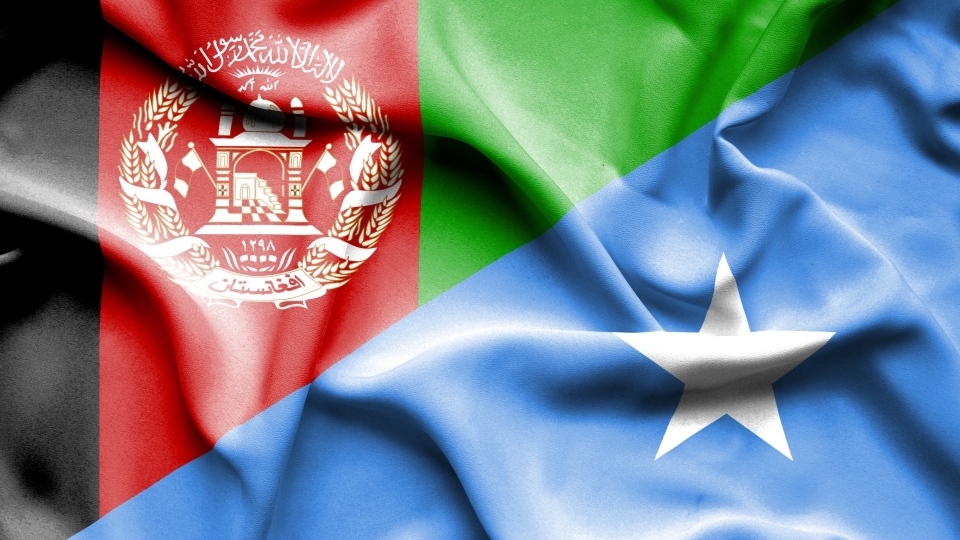Leaving Without Leaving: How Lessons Learned in Somalia Might Have Prevented Afghanistan Collapse
August 17, 2021
- Author
- Jay Pfeifer

The world watched stunned as Taliban forces swept across Afghanistan, reclaiming ground swiftly after more than two decades of U.S. nation-building efforts ended with troop withdrawals.
After 20 years, trillions of dollars and thousands of lives lost, the Taliban reclaimed control of Afghanistan just days following the withdrawal of the U.S. military. The rushed evacuations marked a frustrating end to a long American presence that raised questions about the viability of establishing stable democratic governments in countries without an established representative system.
Political science professor Ken Menkhaus teaches a “State-building and Peacebuilding” class and is an expert on the Horn of Africa. He sees a number of similarities between Afghanistan and Somalia, another country in which Western countries have attempted to fashion a stable government in a country plagued by state failure, corruption, ethnic division, violent extremism and prolonged external armed intervention.
There is one major difference, however. American troops withdrew from Somalia in December 2020 and, so far, the Somali government has not fallen to the jihadi group Al-Shabab or ceded significant territory to the group.
Why is that? Menkhaus shares his insights.
How has Somalia remained stable after U.S. troops left, while Afghanistan collapsed in days?
When it comes to military redeployments, there are ways of “leaving without leaving” that can provide continued support to a weak government and its security sector. Sometimes military advisors are “rehatted;” sometimes contractors are used to play roles vacated by departing troops. In other instances, military support is just relocated across the border. Though the U.S. military advisors left Somalia in December 2020 under orders from President Trump, they didn’t completely leave the region. They essentially redeployed to border areas in Kenya and to ships off shore. From there, they have continued to engage in remote attacks on Al-Shabab, the jihadist group operating in East Africa, and have been able to continue to provide some support to Somali special forces and the large African Union peace operation there. The continued presence of 20,000 African Union peacekeepers has been important in protecting key Somali government installations.
How are they staying engaged from outside of Somalia?
The U.S. military provides air support, which is crucial in counterinsurgency. You can’t defeat anyone solely from the air, but you can restrict movement and provide levels of protection from attacks on forward bases. The threat of air attacks forces insurgents to scatter so as not to present a clear and easy target.
So, is it likely that the United States would follow the same strategy in Afghanistan? Will we provide air support?
At this point, the Taliban is in charge in Afghanistan, so I’m not sure who we would be protecting. But President Biden did make a point of saying that the United States maintains “over-the-horizon” counter-terrorism capability in a number of places around the world and that we’ll probably do the same in Afghanistan.
Between Somalia, Afghanistan, Syria and Iraq, are there any true successful attempts at state-building?
One of the problems in most of these long-term state-building efforts is that the fragile governments we’ve tried to support have never really been self-sustaining. They have been very dependent on external support and funding. And the moment that support is drawn down, the state is at risk of collapse. Somalia looked like a very robust state in the 1980s, but it was heavily dependent on foreign aid and fell apart very quickly after the donor states withdrew support in the late 1980s.
State-building and institution-building takes a very, very long time, and our time frames in these crises have worked on much shorter schedules. Externally-driven state-building efforts are also undercut by political economies that can quickly emerge when lots of money is injected into the effort. Local actors and authorities start to see both state-building and counter-insurgency as very lucrative projects, not desired outcomes. Perpetuating the status quo works well for them. Corruption becomes systemic. What the international community views as a problem to solve, they view as a profitable condition to perpetuate.
Among the countries where state-building and counter-terrorism are being pursued at the same time, the closest thing to a partial state-building success story is Iraq. But Iraq is quite different from Somalia and Afghanistan. Iraq has a long history of a strong state, a bureaucracy and civil service. There was something to build on. The main problem in Iraq has been political paralysis driven by ethnic and sectarian divisions.
There, when ISIS emerged as a threat, the jihadi group drew fighters from all over the world so they were often seen as outsiders by the people living in Iraq. That made it easier for local militia to mobilize against them. By contrast, in Afghanistan and Somalia, the Taliban and Al-Shabab are comprised of fellow countrymen, and have much deeper networks and ties within the country.
We have a tendency to view these insurgencies and counter-insurgencies as a game of chess, with well-defined battle lines. In reality, these crises involve a lot of families and groups working on both sides of the conflict, negotiating with one another, switching sides tactically, and colluding. And everyone knows everyone. It’s a bit more like a fixed soccer game than a chess match. That is what made it so easy for the Taliban to negotiate its way into Kabul and take it over without a shot.



